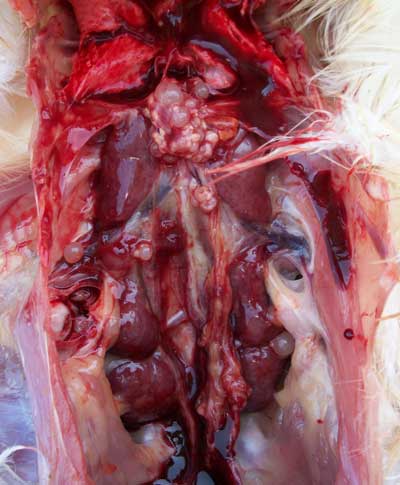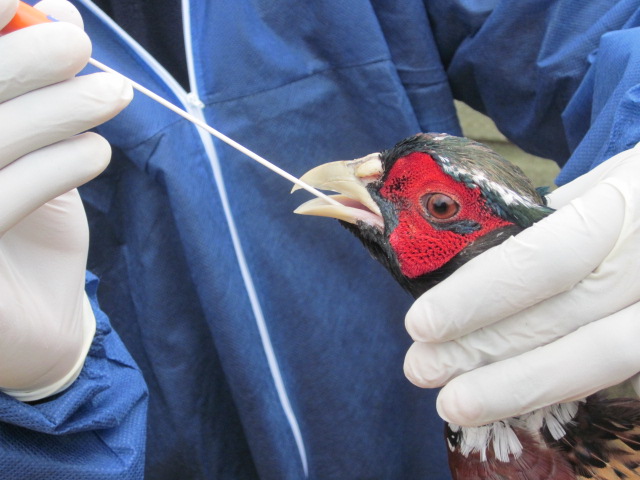Coronavirus (Corona nephrosis) is a virus which damages the kidneys of birds and can result in the sudden mortality of adult birds, otherwise in good condition. The virus is a member of the IB (Infectious Bronchitis) group. Typically, this is seen at times when the birds are under great stress - such as bad weather or peak lay. Mortality can be as high as 50%.
Clinical Signs
Most commonly, the first clinical sign of Coronavirus is sudden mortality, in birds that are in all other respects perfectly healthy. The onset of the virus is of such a rapid nature that there is seldom time for the bird to display significant weight loss. Other less common clinical signs include depressed birds with white diarrhoea. Food intake may also drop. Sometimes we see secondary egg peritonitis in laying birds.
Post Mortem Findings
The abdominal cavity can be filled with thick pus, which often has flocculent white lumps floating in it. The kidneys will typically be enlarged with a pale appearance and sometimes dark wavy lines across them. A deposition of urates, secreted from the kidneys, will give an uneven white covering on the heart and liver (visceral gout Figs 1 and 2). The ureters are often distended with urates.

Fig 1

Fig 2
Figs 1 and 2 Visceral gout
Diagnosis
A tentative diagnosis of Coronavirus can usually be given on post mortem findings, as outlined above. Virus can be isolated from material within the kidneys or PCR (polymerase chain reaction) testing will also confirm diagnosis. The affected kidney can also be sent to a specialist laboratory where special stains can be used to show that the virus is present in the tissue.

Fig 3 PCR swab of a pheasant
Treatment and Control
There are no specific anti-viral treatments available. Treatment should consist of minimizing stress levels in the birds, as well as providing sufficient access to drinking water with electrolytes. If secondary egg peritonitis is evident, then an antibiotic course may be required. Same response to amoxicillin has been noted. The virus is primarily spread through the respiratory tract and infected droppings therefore recovered birds and those infected should be kept away from other birds, and not released back for several months, as they will continue to shed the virus for that time. Control can be helped further by vaccination either in the water, by spray, or by eye-drop. The vaccines available are designed for use in chickens and therefore its use is off licence and a matter to be discussed with your veterinary surgeon.





